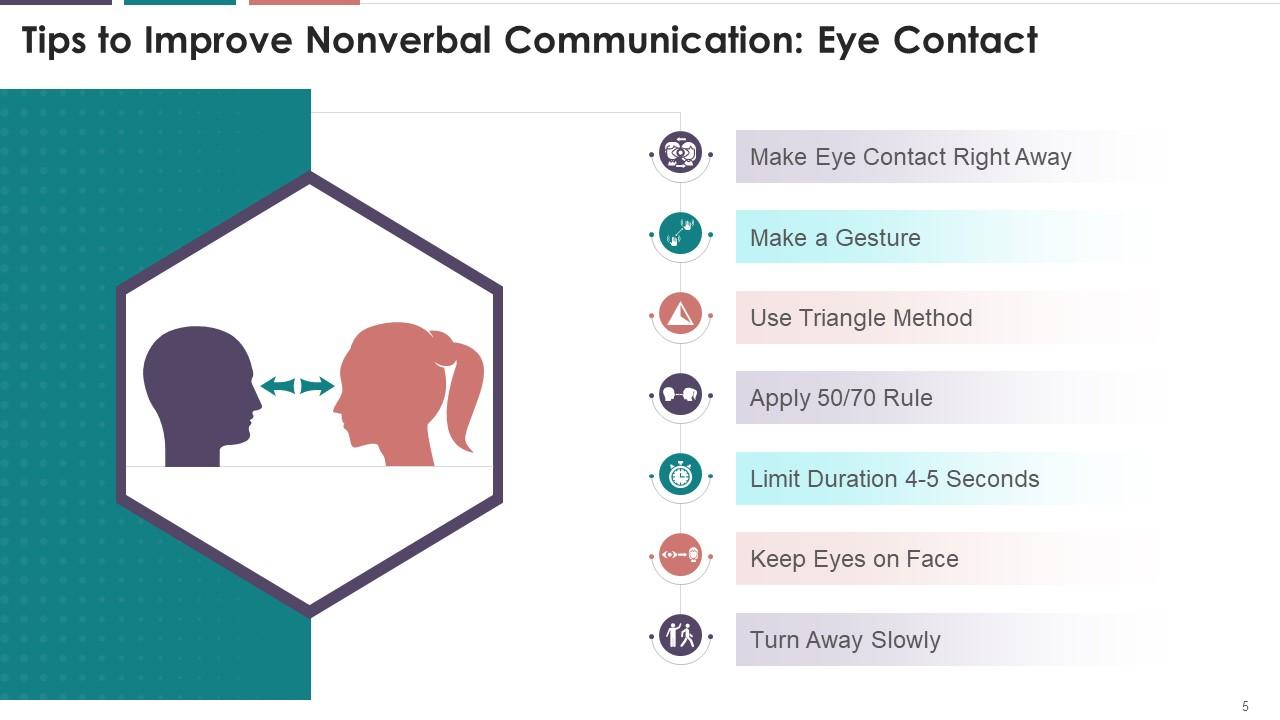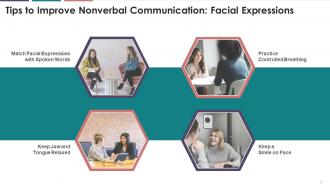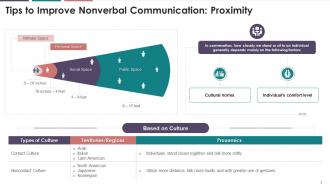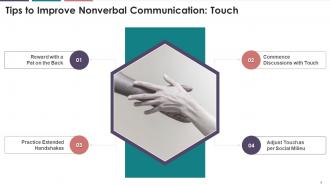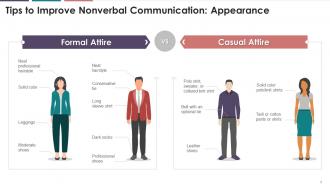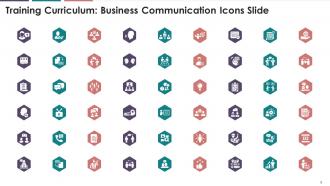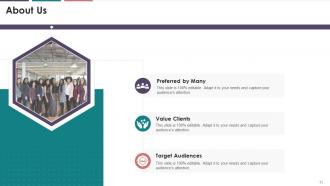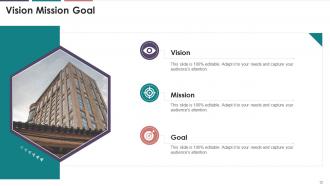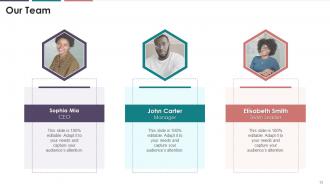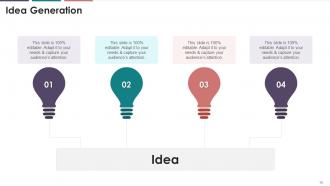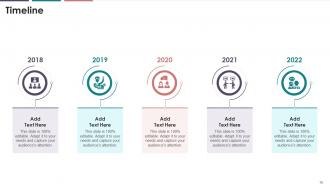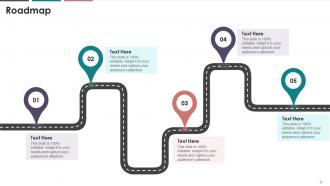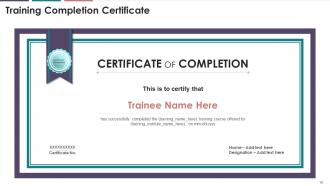Techniques To Improve Nonverbal Communication Training Ppt
These slides highlight the improvement tips to enhance facial expressions, gestures, proximity, touch, eye contact, and appearance for effective nonverbal communication.
You must be logged in to download this presentation.
PowerPoint presentation slides
Presenting Techniques to Improve Nonverbal Communication. These slides are 100 percent made in PowerPoint and are compatible with all screen types and monitors. They also support Google Slides. Premium Customer Support is available. Suitable for use by managers, employees, and organizations. These slides are easily customizable. You can edit the color, text, icon, and font size to suit your requirements.
People who downloaded this PowerPoint presentation also viewed the following :
Content of this Powerpoint Presentation
Slide 1
This slide provides information about tips to have better facial expressions while conversing. The multiple recommendations listed are matching facial expressions with spoken words, practicing controlled breathing, keeping a smile on the face, and keeping jaw and tongue relaxed.
Instructor’s Notes:
While conversing, improve facial expressions using the following tips:
- Match Facial Expressions with Spoken Words: Always ensure that facial expressions match the spoken words and the context of the conversation
- Keep Jaw and Tongue Relaxed: Keep jaw and tongue relaxed inside the mouth to look at ease and avoid seriousness
- Practice Controlled Breathing: Practice controlled breathing by breathing through the nose and exhaling through the mouth
- Keep a Smile on Face: Keep a smile on your face to come across as more likable and relatable to others
Slide 2
This slide showcases information about the tips to improve gestures usage in communication. The multiple recommendations listed are using fingers, hands, the ‘listen up’ gesture, pointing, and weighing up.
Instructor’s Notes:
Deploy following tips to ensure your gestures are goal-oriented and effective in business communication:
- Use Fingers Sparingly: Use fingers only to count (if any) or emphasize essential details during the conversation
- Use Hands: Use hands to reinforce a point and communicate the scale of the message physically. For example, achievement of big sales target with the risen hand
- Use the ‘Listen Up’ Gesture: For more significant impact in conversation, use the ‘listen up’ action (open palms with one hand slightly raised) to make a point
- Pointing: Though a sign of confrontation, it can be used to make a counterargument
- Weighing Up: Use hands like a set of balancing scales to communicate alternative scenarios in conversation
Slide 3
The slide provides information regarding the proximity guide in nonverbal communication. It also tabulates the details of proxemics practised in both contact and noncontact culture.
Slide 4
This slide provides information regarding recommendations on how to use touch effectively to communicate better. The tips listed are reward with a pat on the back, commence discussions with touch and practice extended handshakes.
Instructor’s Notes:
Deploy following tips to use touch to communicate effectively:
- Reward with a Pat on the Back: A part of the brain orbitofrontal cortex controls feelings associated with reward and compassion. This part of the brain gets activated during touch. To activate an individual's sense of accomplishment, give him/her a pat on the back when rewarding them on any professional achievement. Ensure cultural mores allow this, especially when the genders are different
- Commence Discussions with Touch: Always start a discussion related to change with touch as it increases an individual's willingness to cooperate due to the creation of a bond at the subconscious level
- Practice Extended Handshakes: Develop trust with others by giving a longer but firm handshake as it calms them and eases cardiovascular stress
- Adjust touch as per Social Milieu: When communicating through touch, extra caution should be practiced in accordance with cultural norms and personal boundaries of an individual. So adjust touch behavior accordingly
Slide 5
This slide showcases the multiple recommendations to improve nonverbal communication using eye contact. The numerous tips listed are applying the 50/70 rule, keeping eyes on the face, and using the triangle method.
Instructor’s Notes:
Tips to improve eye contact skills are as follows:
- Make Eye Contact Right Away: Always establish eye contact first before starting conversation with someone
- Apply 50/70 Rule: Maintain eye contact in the following proportion while communicating
- When Speaking: 50% of the time
- When Listening: 70% of the time
- Limit Duration 4–5 Seconds: While gazing into someone's eyes during conversation, don't go beyond five seconds, as it then turns into staring
- Use Triangle Method: Imagine an inverted triangle on the face of another person connecting eyes and mouth. Post five seconds, change the gazing point of the triangle
- Keep Eyes on Face: To avoid constant looking into eyes, look at the multiple spots on the face such as nose, lips, and chin
- Make a Gesture: Avoid abrupt break in eye contact with a gesture such as the nodding of head
- Turn Away Slowly: Avoid darting eyes as another person may perceive it as a sign of nervousness and shyness
Slide 6
This slide contains details of Dos and don’ts for office dressing to have an impactful appearance.
Slide 7
This slide provides information regarding office dressing tips for both formal and casual clothing.
Techniques To Improve Nonverbal Communication Training Ppt with all 23 slides:
Use our Techniques To Improve Nonverbal Communication Training Ppt to effectively help you save your valuable time. They are readymade to fit into any presentation structure.
-
Wide collection of templates available. SlideTeam has made it easier to create presentations in just a few minutes.
-
I can say with full confidence that all your business, academic, or professional work requirements will be sufficed with SlideTeam. Their gallery is as rich as 2Million+!!






